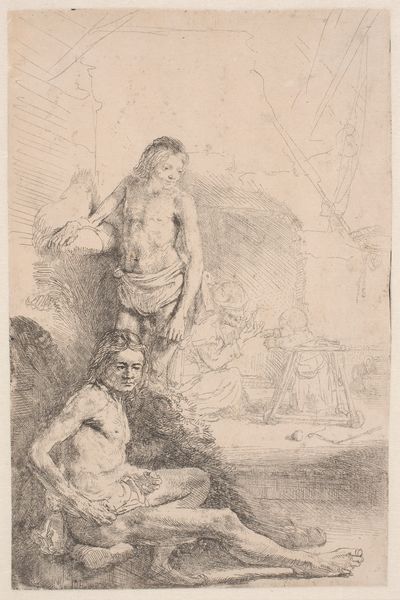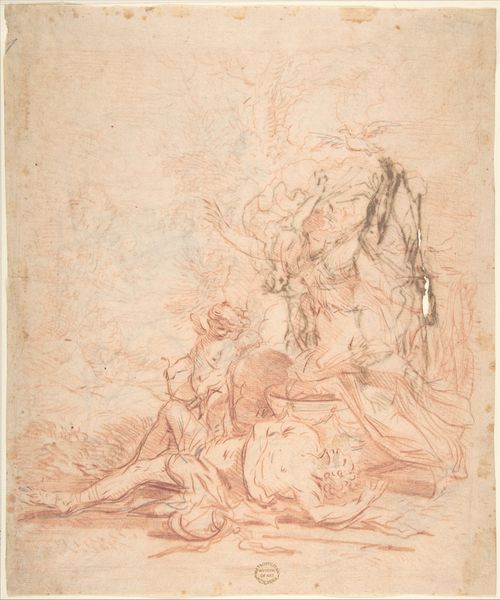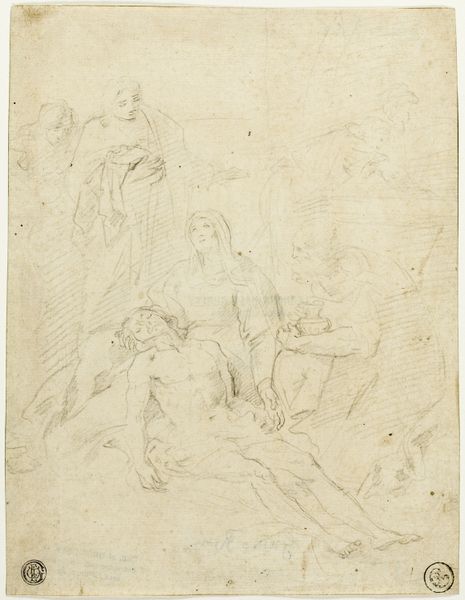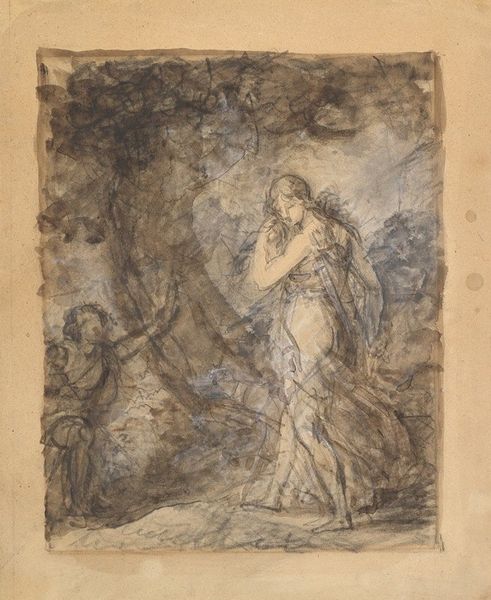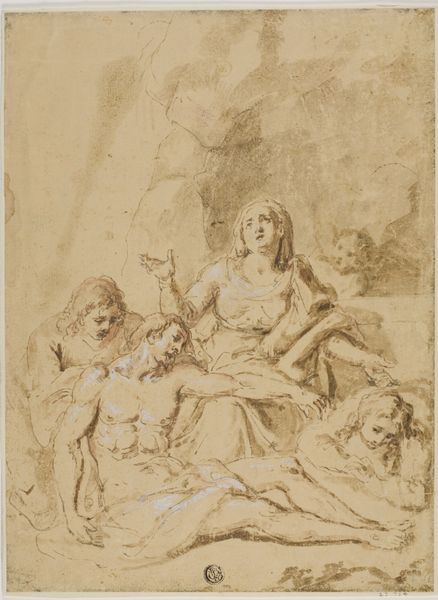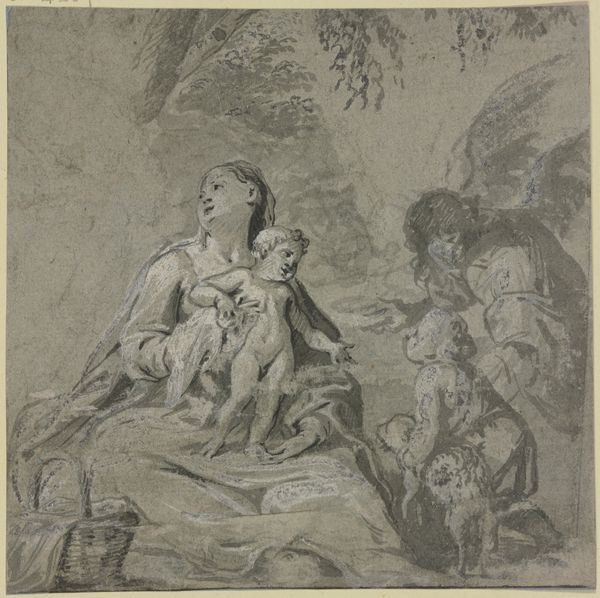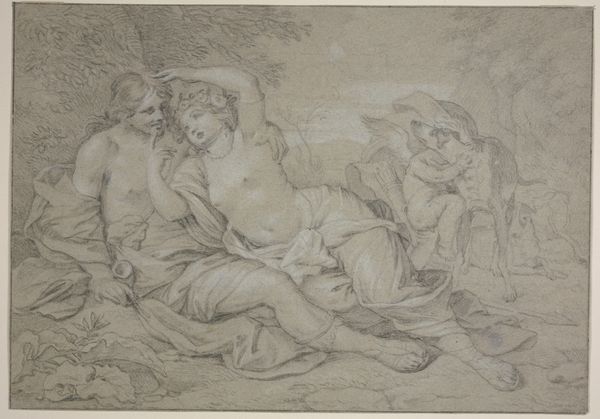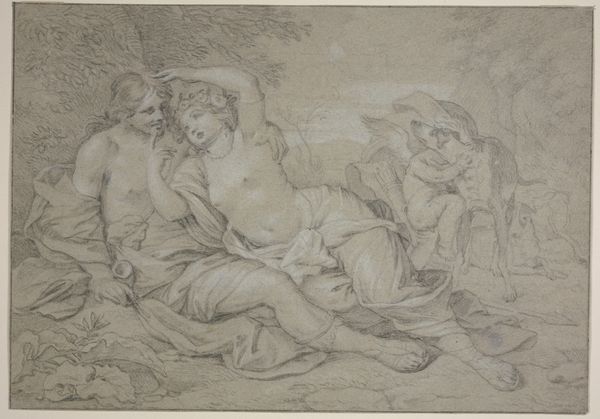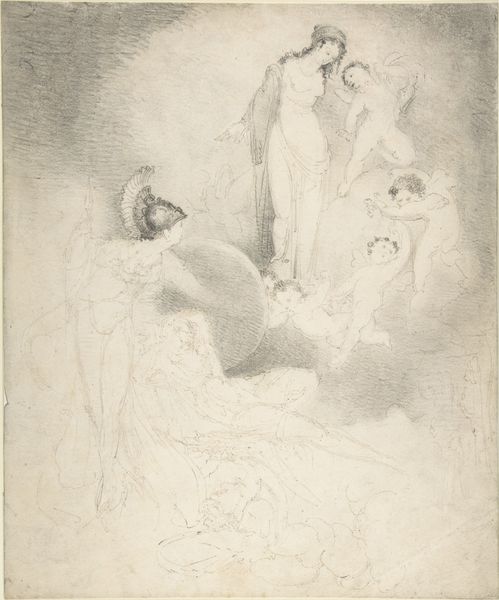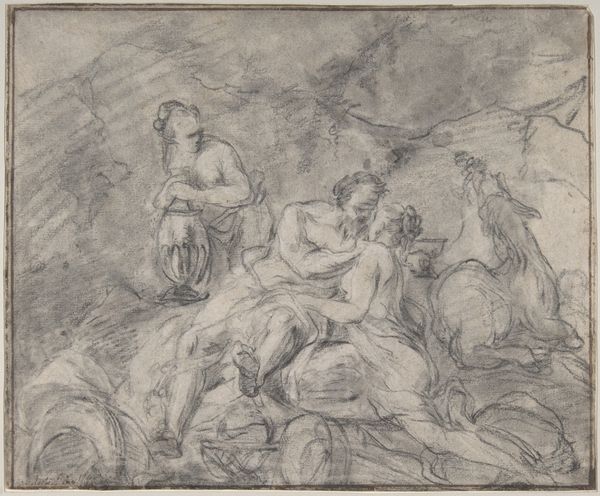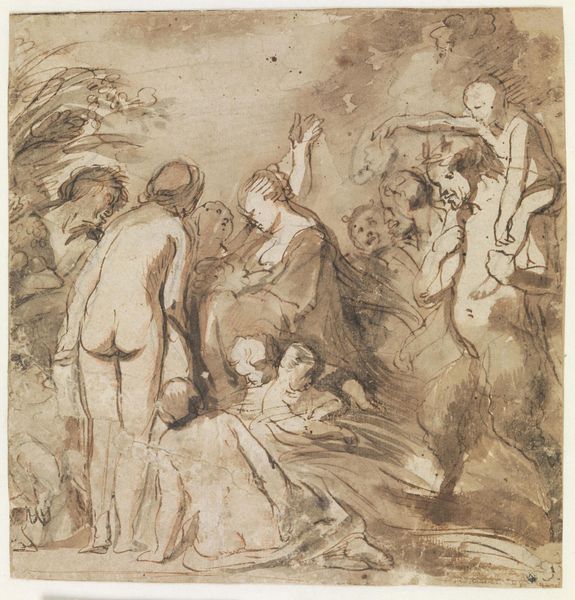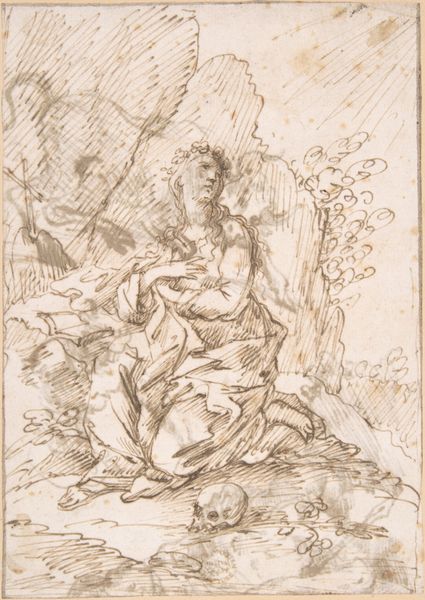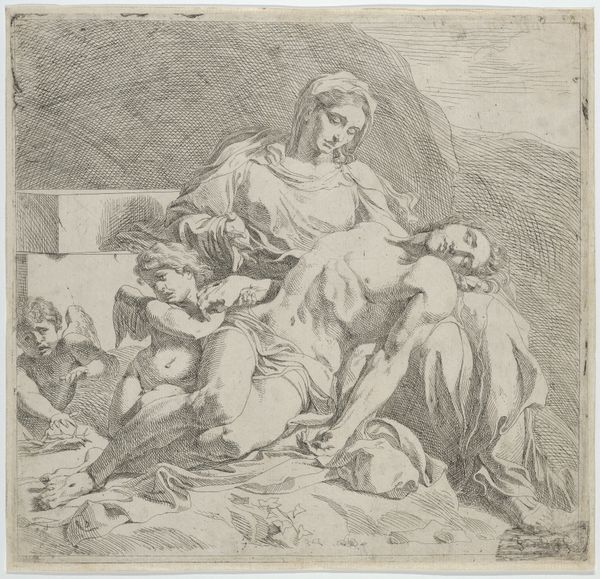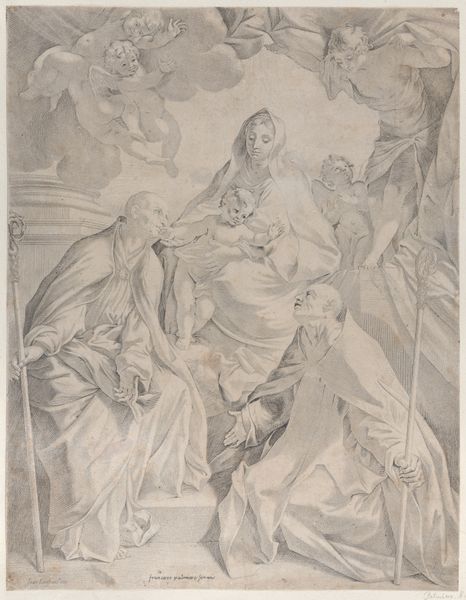
drawing, print, charcoal
#
drawing
# print
#
charcoal drawing
#
feminist-art
#
charcoal
#
nude
#
rococo
Dimensions: sheet: 13 1/16 x 10 7/8 in. (33.2 x 27.6 cm)
Copyright: Public Domain
Editor: Here we have Antoine Pesne’s "Bathsheba at the Bath," a charcoal drawing likely created around 1750. The texture achieved with the charcoal is quite striking, lending a soft, almost dreamlike quality to the scene. What can you tell me about the way Pesne chose to work with this material? Curator: The choice of charcoal is critical here. In 1750, drawing wasn't simply preliminary—it was a valued skill and form in its own right, crucial to the production of engravings that spread imagery and ideas widely. Charcoal offered the possibility of mass production because drawings, through engraving, became reproducible for broader audiences. Look at the loose strokes; does this suggest speed and efficiency, perhaps indicative of a studio environment concerned with output? Editor: That's a really interesting point about engravings and the reproductive nature of the image. The fleeting marks do seem at odds with the wealthy subject, almost industrialized in her depiction! Would that cheapen the overall subject and purpose? Curator: Cheapen is subjective, but the relationship to materials and class is inescapable. The use of drawing for mass production brings the erotic and courtly image of Bathsheba into the middle-class home, blurring traditional lines between high and low art. Does the act of disseminating this image to the aspiring classes critique the extravagance it depicts? What does that reveal about the cultural anxieties of the period? Editor: I see what you mean! This opens up all sorts of questions about art, reproduction, and social class. So, next time I see a charcoal drawing from this period, I should think about the engraving process and consider its cultural reach. Thanks! Curator: Exactly. It’s about considering the artwork not just as an isolated creation, but as a commodity embedded in the economic and social fabric of its time. That changes everything!
Comments
No comments
Be the first to comment and join the conversation on the ultimate creative platform.
